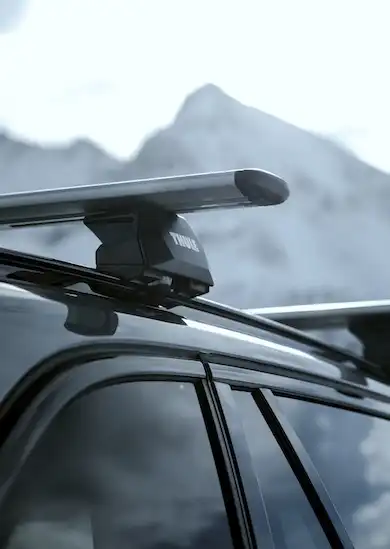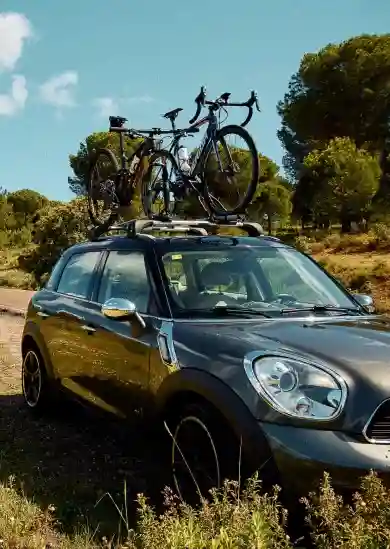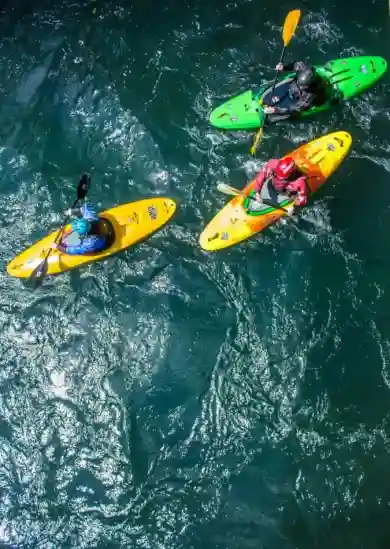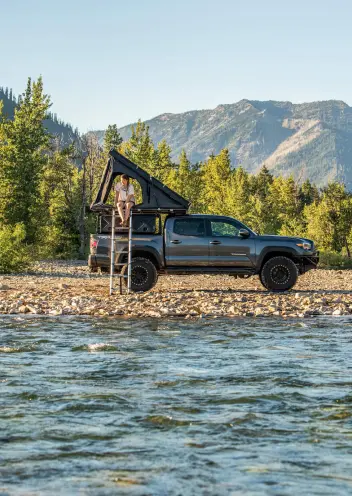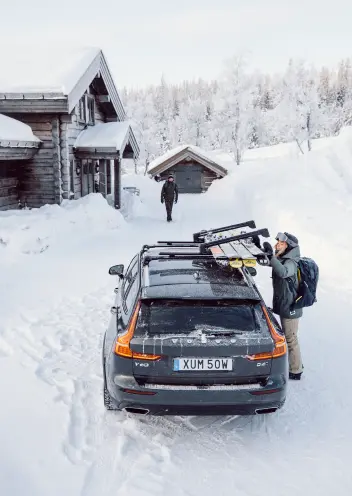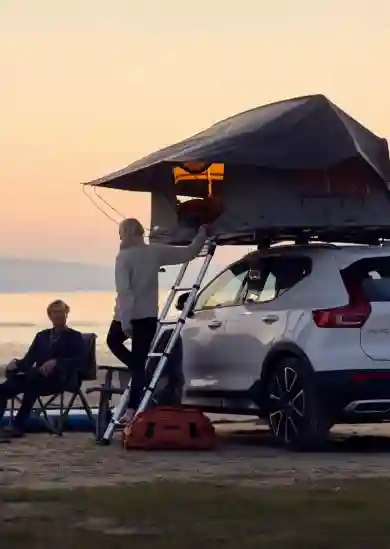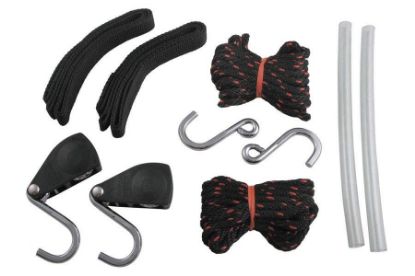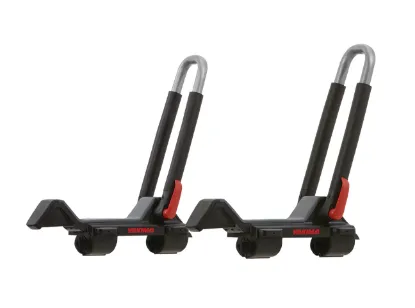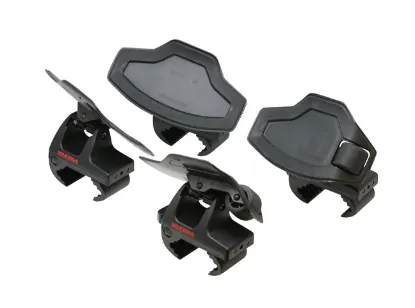May 26, 2020
Rack Attack Team
Check out parking lots near any beach in North America—doesn't matter if it's a river, lake, or ocean—and there will be every manner of self-propelled watercraft being unloaded—sometimes precariously—from a roof rack or trailer.
Canoes, river kayaks, sea kayaks and stand-up paddle boards are the most popular, but these days, surf-skis (long, pointy, high-performance boats), sit-on-top kayaks, windsurfers/foil boards and outrigger canoes have joined the nautical parade. If you can float it, you can probably find someone who will try and ride it (surf cycles, anyone?) Getting your gear safely to your launch spot is sometimes the most stressful part of the day.
The challenge, of course, is that the cars we own, might not be well-equipped for handling an unwieldy windsurfer or a twenty-foot canoe.
There are a variety of specialized racks and accessories for carrying your watercraft
Like most systems, people start with a two-bar roof rack. Foam pads that wrap around the bars can prevent compression indentations on, say, an epoxy/resin foam core surfboard. But if you care about your craft it's worth the extra money to buy a rack specifically made to carry it. No matter what rack or vessle you're working with, Tie-down straps are mandatory. If you're not sure how much strap you need, err on the side of surplus and buy a strap longer than you might need – you'll never know when you might have to stack surfboards and need a longer strap length. Dangling straps are dangerous; not only is it highly annoying to drive with a flapping strap, it could get entangled around another object. Make sure that there are no loose ends, wrap your extra strapping around the rack's roof clamp. Some rack/strap systems utilize some sort of ‘keeper' to reduce excess straps from dangling. Locking straps add some security if you leave your board on the car in potentially sketchy areas.
Surfboards, SUPs, river kayaks and smaller craft can be handled by one person. If you have a taller vehicle like a van or SUV, investing in a sturdy footstool or ladder will greatly ease your job.
Kayaks with rounded bow lines are often transported using “J-shape” cradles that provide a solid interface between the rack bars and the boat. These brackets must be attached directly to your rack bars and manufacturer compatibility is a consideration between the bars and whatever attachment system you purchase. These J-shape cradles save space on your rack track by tilting your kayaks at an angle, rather than flat.
Sea kayaks and generally all watercraft over three meters (and 25 kilograms) will be considerably more unwieldy and are often a ‘two-person job.” Boats with round hulls will benefit greatly from a special cradle-style attachment that prevents the boat from rocking back and forth in transit. Solo paddlers will do well to invest in a lift-assist or roller system cradle mount that allows the boat to smoothly roll into place.
No matter what, you'll need tie-down straps that attach your boat's bow and stern to your vehicle's front and rear bumper undercarriage. It's not just for safety, it's the law. Most roof rack ‘incidents' on freeways start due to a lateral instability in the load, not as a result of wind resistance lifting the boat and flipping it off end over end. All Kayak Racks we sell come with bow and stern tie downs. But if you need more, we have them available on their own as well.
Here are a few other tips for loading and unloading your boat in a public place.
1) Beach parking is usually at a premium. If you love flat water, early, early mornings are usually your friend (they don't call it “morning glass” for nothing). There's likely very little wind, so taking your board or kayak is a cinch. There are even “gear caddy” type trailers that allow you to carry all of your toys down to the beach.
2) Most nautical activities take place on public property – usually a park or nearby dock facility. Look for a dedicated loading/unloading zone near your beach. These places offer short term parking to unload your board. If you're going with a friend and the launch area is super busy, your friend can scout the parking lot to find a free space while you are unloading the gear. If there isn't a place to unload gear, look for a sheltered spot out of the wind to unload the boats.
3) There's a bit of a moment of truth when you must throw your rack straps – and their heavy buckle – over top of your board to the other side of the rack. The challenge is that if you throw the strap too far, the metal buckle might hit the vehicle parked next to you and ding their paint job. Not a great way to make friends if you've never visited a park before.
4) Launch sites can be windy. You have only one objective – to safely transport your watercraft down to the beach without damage/endangering yourself or others. Don't hesitate to ask a stranger for help—we all recognize when someone is in a bit of a spot and an extra pair of hands can help in sorting things out.
5) If you're driving at freeway speeds, drive a short distance and gauge how secure your load is, especially if boards are stacked on top of each other. Foam blocks placed between boards will inhibit sideways movement.
There are other accessories that make aquatic adventures a breeze, such as roller carts that enable you to you're your kayak to the beach. Some models even have fat tires, to glide over sand. Bins for organizing wetsuits, booties, gloves and hoods are a good idea and of course a few jugs of hot freshwater make putting on a damp wetsuit palatable, while removing salt and sand at the end of a session.
